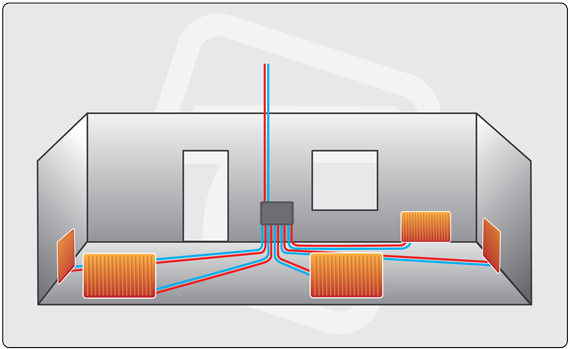070 51 51 50 +38670 51 51 50 All days of the year from 8:00 a.m. to 7:00 p.m.
Email info@tisto.eu
Address
-
 ToolsPopular
ToolsPopular
-
 Light construction machinery
Light construction machinery
-
 Electric wire tools
Electric wire tools
-
 Power cordless tool
Power cordless tool
-
 Accessories for power tools
Accessories for power tools
-
 PumpsNew
PumpsNew
-
 Heating, cooling and solar technology
Heating, cooling and solar technology
-
 Battery products
Battery products
-
 Charging products
Charging products
-
 Photovoltaics
Photovoltaics
-
 Inverters
Inverters
-
 Electromobility
Electromobility
-
 Hand tool
Hand tool
-
 Security and health at work
Security and health at work
-
 Home and garden tools
Home and garden tools
-
 Cosmetic appliances
Cosmetic appliances
-
 Building materials
Building materials
-
 Garden machines and tools
Garden machines and tools
-
 Measuring techniqueBest selling
Measuring techniqueBest selling
-
 Microscopy and astronomy
Microscopy and astronomy
-
 Firefighting equipmentTop
Firefighting equipmentTop
-
 Farm machinery
Farm machinery
-
 Office equipment and computers
Office equipment and computers
-
 Sanitary ware
Sanitary ware
-
 Pallets
Pallets
-
 Rental
Rental
-
 All categories A complete list of all categories in your online store
All categories A complete list of all categories in your online store
Heating installations

PERT is one of the key components of Home system. Based on pipes and press fittings and offered in diameters ranging from 14 to 75mm, it applies to broad spectrum of heating systems (max. 95 deg. C).
PERT pipes and fittings are perfectly suited for heating installations in every type of buildings
Key advantages of PERT heating installations:
- durability estimated lifespan of min. 50 years
- energy - saving due to low pressure losses and low thermal conductivity
- flexibility with no shape remembrance multilayer pipes are more flexible than any other known
- Translate
- pipes and can be bended without any supports. Bending radius is on the level 4-5 x Dn
- thermal stability (0.025mm/mK) very low thermal expansion coefficient (0.025mm/mK), is comparable with values characteristic for steel or copper pipes
- total impermeability of connections
- possibility of making connection with any other pipe by using threaded couplings
- low weight
- resistance for oxygen diffusion
Types of installations
Tee based arrangements
Heaters are supplied from the main line by branches leading to tees mounted on them. Supply lines are usually located in the floor or on the wall in following arrangements:
Circuit type - heating medium is distributed along the walls where heaters are mounted. This allows the use of masking bars, making this type of system ideal for renovation. Relatively large demand for pipe and the need to go through the construction barriers are the main disadvantages of this arrangement.
Radial type – heating medium is freely distributed from vertical supply line to the heaters without the need of getting through the construction barriers. The pipes are routed from the middle of the room which leads to reduction in their required length.

Tee based arrangements do not give any possibility to replace damaged pipes without forging floors or plaster. Moreover, connecting of additional heaters to the main supply line will gradually decrease the pressure and will cause trouble with flow adjustment on individual plots.
It is the major disadvantage of tee based arrangements in comparison to manifolds.
Manifold based arrangements
The ability to supply each radiator with a separate line that runs straight from the manifold is a specific feature of this arrangement.

Summary of qualities:
- ease of adjustment
- ability to make changes in the installation without the need of forging the floor
- lower risk of failure - there are no connections between the radiator and the manifold located in the floor
- no need of investment in expensive tools - only a simple flat wrench is required for manifold based installation
- fast installation – time savings
Within the Tweetop Home system, there are several brass manifolds available - designed for managing from 2 to 12 supply lines, depending on the actual type chosen.
Manifolds should be mounted in special cases, which can be mounted both directly on the plaster as well as countersunk below it. There is enough room in the case to incorporate cutting valves for every single circuit managed by given type of manifold.
Routing
On the installation design stage, it is important to remember about:
- using coverage/protection pipes
- supplying the heaters from manifolds with shortest possible segments of pipes
- increasing the length of pipe for ease of thermal expansion within the installation
- avoiding very sharp turns and long sections of pipes with many turns
- ensuring the possibility of inner pipe replacement
- possibility of Tweetop PERT pipes bending
- marking the placement of pipes under the floor and in the walls which will help to avoid any damage due to drilling
Radiator connections
For C type radiators
Connection based on press screw couplings or press coupling - reducers, with utilization of Tweetop PERT pipes advantages allowing for pipe bending radius being equal to 4 times its inner diameter.

For V type radiators (a)
Connection based on press screw couplings with utilization of Tweetop PERT pipes advantages allowing for pipe bending radius being equal to 4 times its inner diameter.

For V type radiators (b)
Connection based on knee with 15mm diameter nickel plated copper pipe.

For V type radiators (c)
Connection based on tee with 15mm diameter nickel plated copper pipe.

No posts found
Write a review- For telephone orders, we are available every day of the year from 8:00 to 19:00
- Dunajska cesta 101
- 1000 Ljubljana
- Slovenia EU
- +38670 51 51 50
- info@tisto.eu
© 2009 - 2025 TISTO. We make every effort to publish only verified and correct data; if you find untrue or inappropriate information on our site, please let us know at info@tisto.eu. The photos do not guarantee the properties of the products.








